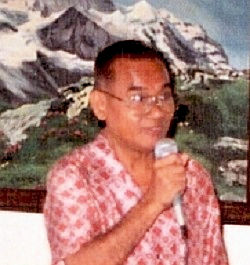 1986 RAST Meeting |
Jamnong 'Nongy' Sowanna Bangkok, NOI Thailand QCWA # 20417 |
From the: "December 2011 RAST meeting"
Had a minute's silence for our SK's including: HS1JN, Jamnong, 87 who passed away from alzheimers in July this year.
It is with great sadness that we announce the passing of Jamnong Saowanna, HS1JN, a former vice president of RAST for four terms and a committee member over a period of more than two decades.
Jamnong succumbed to Alzheimer's disease and passed away in July, 2011, RAST learned on November 30.
He had been 87 at the time of his death. A captain in the Royal Thai Navy, Saowanna had served as vice president of RAST for a total of eight years, from 1978-1980 and from 1996 to 2002.
He had been among a small group of Thais who had been pioneering amateur radio activity on HF from Thailand back in the 1960s and he had been active in RAST's efforts to push for the legalisation of amateur radio during the 1970's and 1980's.
Capt Jamnong, R.N. will be missed by his many friends in RAST. May he rest in peace.
Thailand loses a true ham radio pioneer
by Fred Laun, K3ZODuring my first tour of duty in Thailand 1968-1970, as well as my tour of duty in Vietnam in 1971-1972 during which I holidayed in Thailand on four occasions, Jamnong Saowanna, HS1JN, was a very important figure in the very long-term but ultimately successful effort to fully legalise Amateur Radio in Thailand.
He served at the time in the same military facility off New Petchburi Road as the late Bob Daniel, W6LCB (ex-HS1BD) of Stanford Research. Bob Daniel was an unusually empathetic American scientist and along with his wife, who was a Native American (Eskimo) woman, built up a loyal list of good friends in Thai society.
I understand that on several occasions when Stanford Research proposed to transfer Bob Daniel out of Thailand to another assignment, Thai authorities threatened to cancel the Stanford Research contract unless Bob was retained in Thailand.
Bob Daniel's XYL belonged to a card-playing group of Thai ladies which included the XYL of then Deputy-Director General of the PTD, Sribhumi Sukhanetr. Through that relationship Bob was able to quietly feed positive information about the Amateur Radio Service to Khun Sribhumi.
Bob obtained the historical information he needed about the Amateur Radio situation in Thailand from Capt. Jamnong, who had been using the call HS1JN unofficially for many years even before the 1960's. Jamnong in turn was a close personal associate of the late Special Col. Kamchai Chotikul, HS1WR.
This was a difficult period for the efforts to improve the situation of Amateur Radio in Thailand because the person who was probably the very first radio amateur in Thailand, Sangiem Powtongsook, HS1PJ, and therefore was considered by the authorities to be the greatest Thai expert on the Amateur Radio Service, was telling anyone who cared to listen that Amateur Radio was subversive and a national security danger to the country.
Apparently his purpose was so that he could hope to be the only Amateur Radio operator in Thailand. As many of you know, Khun Sribhumi later became HS1SS, managed to get Thailand removed from the ITU's "banned list", and proposed to establish a reciprocal operating agreement with the USA in about 1970 which effort was stopped by the then Minister of Communications, Gen. Dawee Chullasapya.
Khun Sribhumi opened the 1978 IARU Conference in Bangkok chaired by HS1WR, and of course later became President of RAST himself. His conversion to the Amateur Radio cause was a key milestone on the road to eventual legalisation. It would not have happened without Jamnong's quiet liaison work.
It should be said that Jamnong even by Thai standards was an unusually self-effacing person. Ever humble and a quiet conversationalist, one would never know on first meeting him that he was a Captain in the Thai Navy, much less that he had received an award for heroism resulting from his actions on a Thai Navy ship in the Korean Theatre during the Korean War.
He was also an expert user of Thai Morse with its reported 64 main characters. His greatest hope, he told me, was to one day be able to take and pass the examination for the highest-class of Thai Amateur Licence, which includes proof of proficiency in Thai Morse. Sadly, he never had that opportunity.
Among other things, Jamnong was the "Elmer" for Jirasak Visalsawat, N6CZG. It can be said that the spark for the love of electronics generated in Jirasak when Jamnong first planted the seed in the neighbour boy's head was a key factor in the start of a career which now finds N6CZG as a Senior Engineer with NASA, so in that way Jamnong has contributed to my country, and to space science as well.
Thailand has lost one of its true ham radio pioneers, but his spirit can be seen every day in activities by RAST such as those during the recent flood. He is missed, but never forgotten.
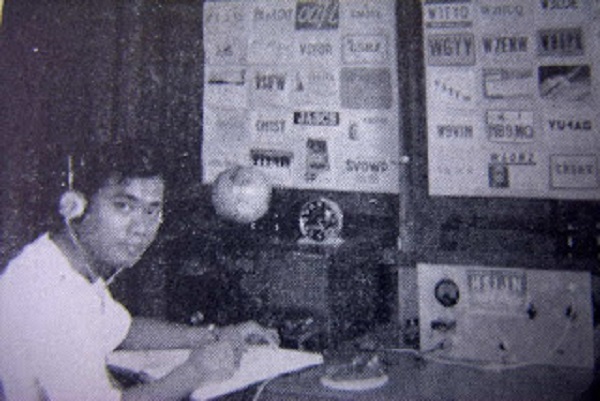
A young 'Nongy' at his station
HB 40 watt xmtr and an S-40 with a longwire antenna.
He has WAC and is working on WAS and DXCC.
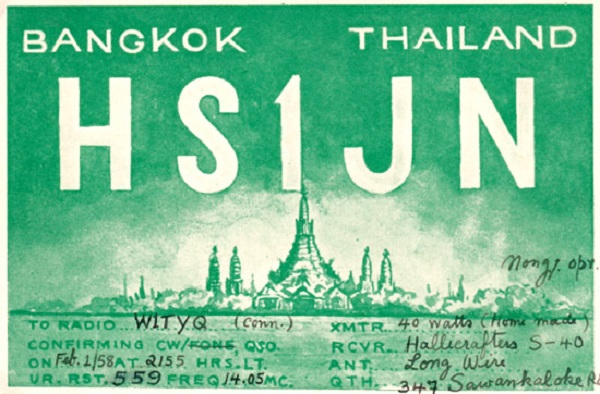
1958 with W1TYQ
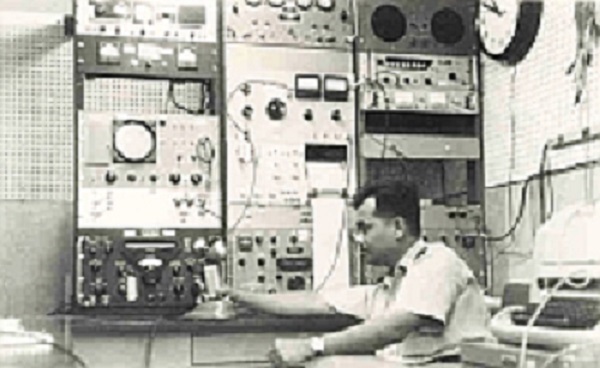
HS1JN at a satellite receiving station of the Stanford Research Institute in Bangkok during the 1960s

1969 with W6FMR
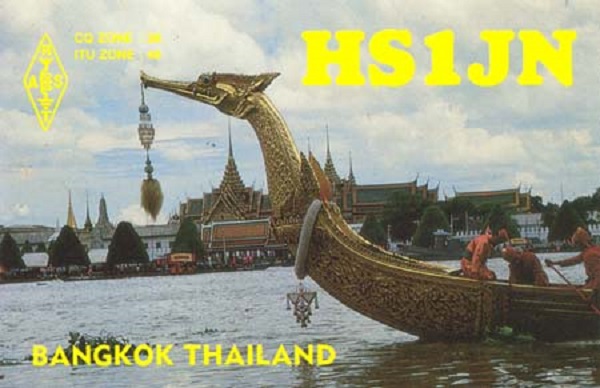
1991 - courtesy of E21EIC